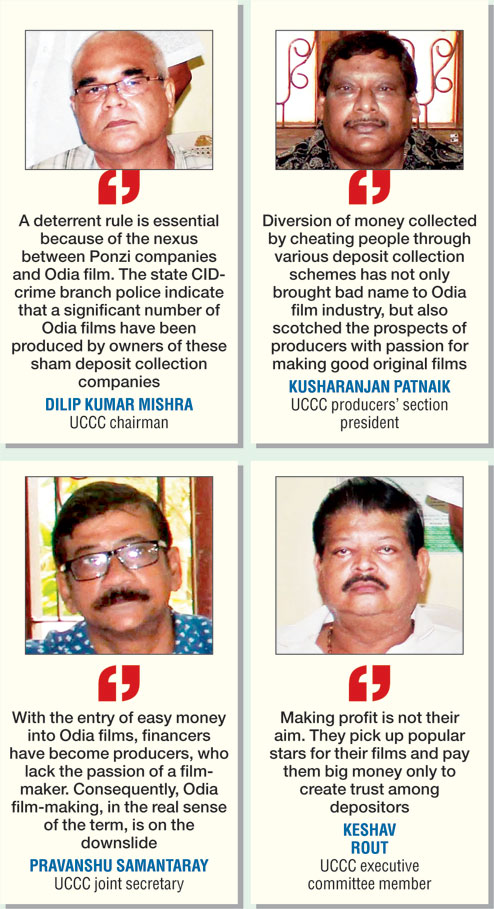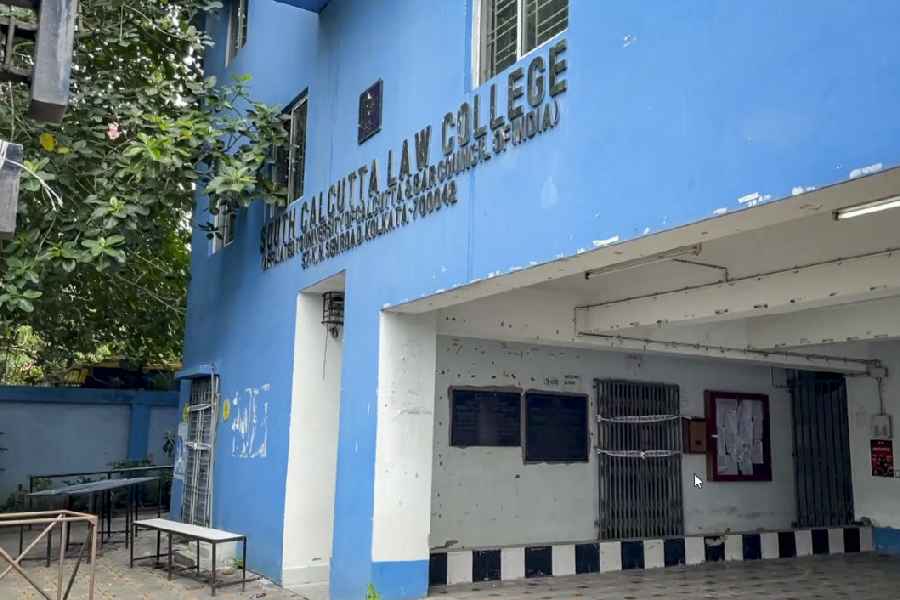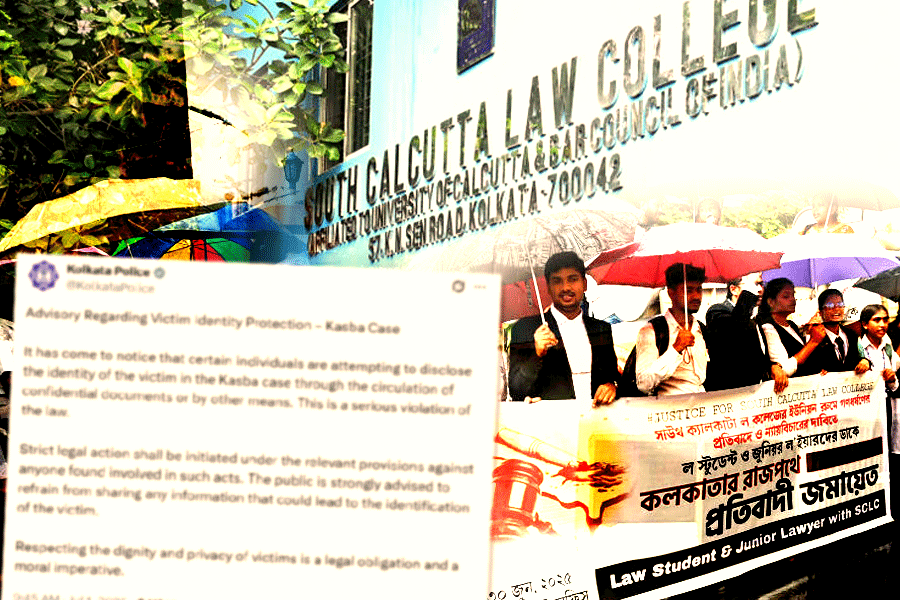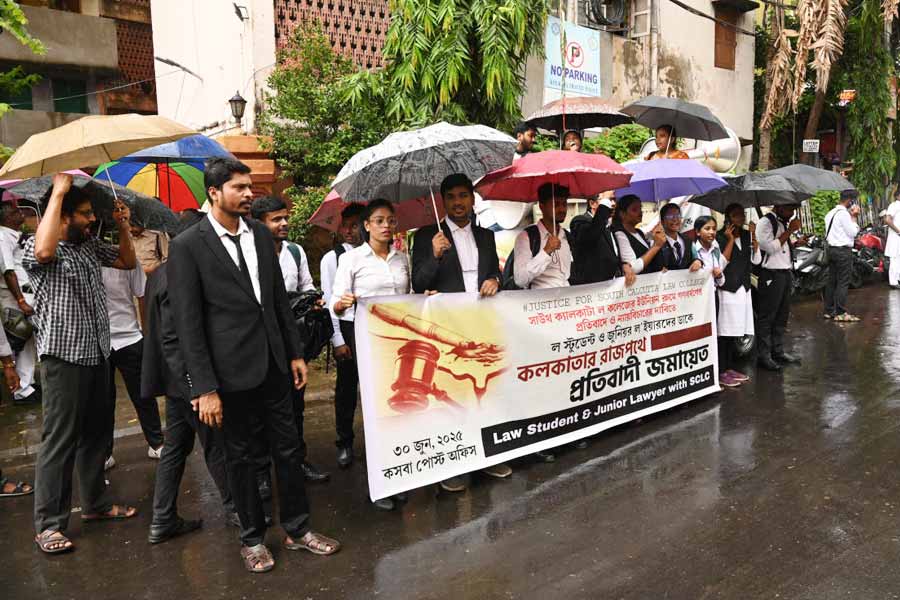
Kharipadia
Lord Jagannath
Arikhita Mallick, 61, and a group of people from this tiny hamlet, Harijaan Sahi in Raghunathpur block of Jagatsinghpur district, will take part in rath yatra. It is from his land that the temple administration found the Darubrahma (the holy neem tree) used to construct of the idol of Lord Jagannath.
Arikhita says: “I will go and see the Daru Parambramha, which has been used to fashion the idol of Lord Jagannath. Since my childhood, I have worshipped the Darubrahma located in my house before it was taken for the construction of the Lord’s idol. Although I am not sure if I will be able to touch my Prabhu, I hope that the servitors (daitapatis) who had come to my village to take the holy neem tree, will recognise me.”
After the holy tree was taken by the temple administration, a tulashi chaura (basil tree planted and worshiped) has come up at the same spot. A six-feet tall Jagannath temple has been constructed adjacent to the tulashi chaura.
Another house has been built to preserve one of the wheels of the chariots of Lord Jagannath. Last year, the temple administration had given the wheel and Rs 5 lakh to the local villagers as a token of good will in exchange for the holy tree. The temple administration had given another Rs 3 lakh to Arikhita.
The villagers have joined hands to build a 49-feet temple at the place where the Daru was located earlier.
“We are poor villagers but we have estimated that Rs 56 lakh will be spent on the construction. We have already spent Rs 12 lakh and decided to approach nearby villagers to help to build the temple,” said Balaram Mallick, another villager.
Since the day the holy tree was taken from here, every morning and evening local people gather and worship Lord Jagannath. “Come rain or shine, we perform kirtan and bhajan and offer our prayers. The atmosphere is electrifying and we feel the presence of Lord Jagannath,” said Baikuntha Panda, the priest of the temple.
The villagers also recalled how their tiny village had witnessed a sea of humanity after the administration announced the location of the tree. “Many miracles had taken place prior to that. We experienced it but could not share it with the public,” says farmer Prafulla Mallick.


Adanga
Goddess Subhadra
Serenity surrounds the Nilakantheswar Temple at Adanga village, where the holy neem tree was found to chisel out the idol of Goddess Subhadra.
A neem sapling stands where the holy Daru once stood. The area has been barricaded to protect the neem sapling and maintain sanctity.
A new building meant for holding various pujas has come up with the assistance of the Shree Jagannath Temple Administration at the place where yajna was held before chopping off the tree.
However, the temple priest, Hemanta Raul, had many complaints against the temple administration.
“We had pucca houses where the temple priest used to stay. But the district administration demolished the building saying that they would construct new ones for the priests once the rituals of taking the wood to Puri was complete. But this has not happened. Even the approach road to the temple site has not yet improved,” said Raul.
The wheel of the chariot of Goddess Subhadra has been placed under a roof and regular puja is conducted there.
Local youths are excited to be in Puri to take part in the car festival. “We have made all arrangements. We are now the family members of Lord Jagannath,” said commerce student Ramakant Behera.
“Last year, more than four lakh people had come here to see the holy tree. This village had turned into another Puri. Now, everything has changed. We have to keep the memory preserved for posterity,” said his friend Ranjan Das.



Kanakpur
Lord Balabhadra
There is a sense of joy at the place from where the holy neem trees were taken for the construction of the deities. But Kanakpur, from where the tree for Lord Balabhadra was taken, is an exception.
The anger is palpable among the local people against the temple administration. Kanakpur is a popular religious place and hundreds of devotees visit the Maa Sarala shrine daily. “On the roadside, we had thatched shops and used to make a decent living. After the sacred tree was identified, the administration demolished 52 shops and assured us that they would rehabilitate us. Fourteen months have passed and this has not happened,” said Tikam Khuntia.
Khuntia, in his 80s, said: “Since childhood, I have made a living by selling snacks to the devotees visiting the shrine. I used to earn around Rs 500 a day. But after my shop was demolished, I am unable to get even one square meal for myself. Your questions are adding salt to our wounds.”
Local people say the Shree Jagannath Temple Administration had given Rs 5 lakh and the money has been placed in the shrine fund. Not a single paise has been used to improve the site. In the place where the Daru was located, a small neem tree stands with a photo of Lord Balabahdra, reminding the devotees of last year’s incident. The wheel given by the Shree Jagannath administration has been kept in unclean surroundings.
Sub-collector of Jagatsinghpur, the executive officer of the Maa Sarala Temple, Narahari Sethi says: “We planned to construct a mandap. But it did not happen. The money is with us.”
Asked why the administration had not rehabilitated the people yet, Sethi says: “We plan to build shops with the help of the tourism development commissioner.” But the sub-collector failed to give a timeframe when the shops would be completed and when the shopkeepers would be rehabilitated.
With a non-committal administration, the fate of shopkeepers remains uncertain.


Gadakhuntania
Lord Sudarshan
Dillip Martha, 53, has left his home and now stays near the place where the holy neem tree was found for the construction of the idol of Lord Sudarshan, considered the weapon of Lord Jagannath.
A 10ft-high temple has come up near the place and Lord Jagannath and His siblings are being worshipped in it.
"People have generously donated land and money for the construction of a temple near the place. The money donated by the temple administration has been used to develop the area,” Martha says. He adds that there is a big plan to build a Jagannath temple and garden for children. The local people plan to invest around Rs 5 crore for the construction of the shrine.
The daitapatis of Shree Jagannath Temple have extended their help to the project. Shree Jagannath servitors association president Ramakrushana Das Mohapatra says: “We will always provide support to the people of the areas from where the wood for construction of the idols was found.”
The local people have already built a resting shed-cum-office near the site and a yajna mandap. A small room has also been built to place the wheel donated by the Shree Jagannath Temple. “We had held a yajna to commemorate the completion of one year since the finding of the tree,” said Dillp Patra, another villager.
Ashok Sahu, a local contractor and his friend donated land, the market value of which is estimated to be more than Rs 1 crore, for the construction of the temple. Every day, local people offer prayers at the temple. The state forest department has set up a garden planting saplings of neem, phasia and other trees mainly used for the construction of the idols and the chariots.
PICTURES BY ASHWINEE PATI











